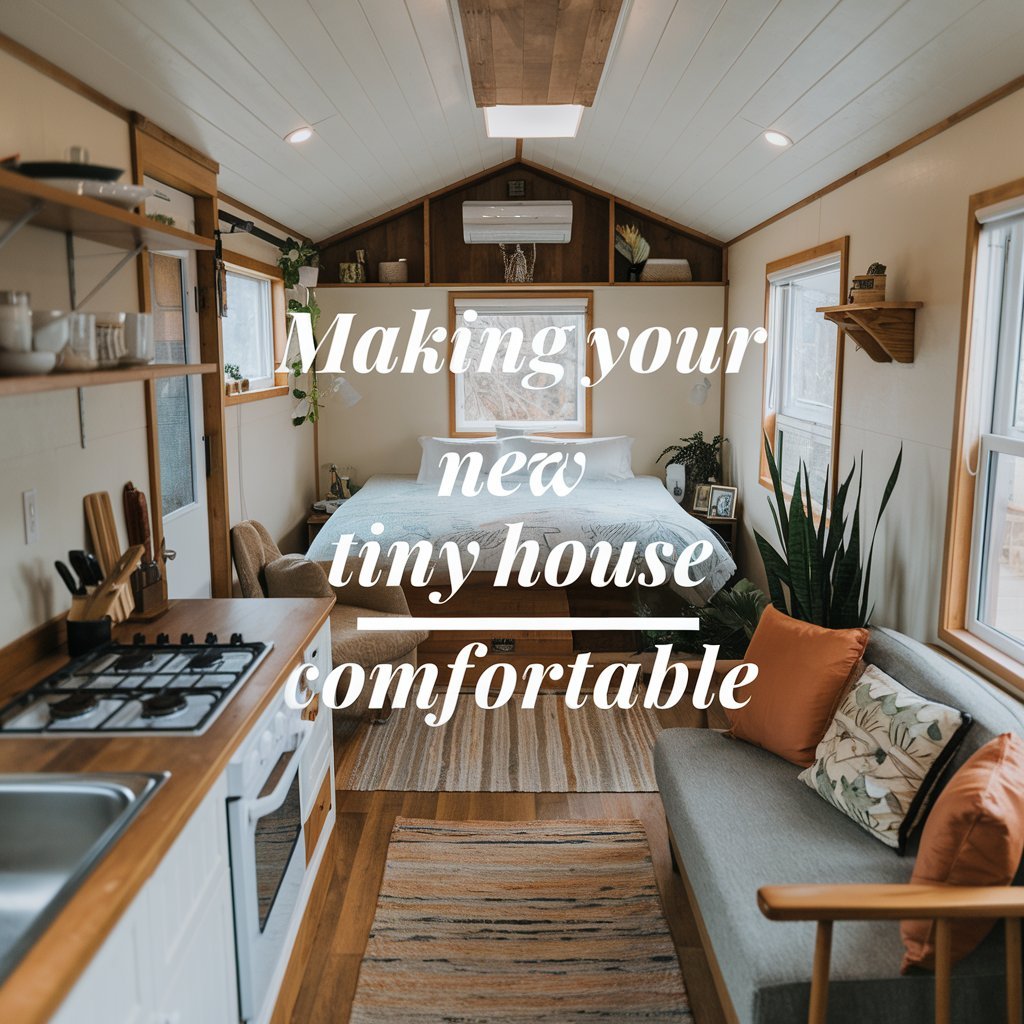Imagine a lifestyle where your house generates its own power and collects rainwater. Compact dwellings under 400 square feet are redefining modern sustainability. These mobile or stationary structures prioritize self-reliance through solar energy, wind power, and innovative water systems.
Unlike conventional houses tied to utility networks, these spaces operate independently. Many feature wheels for relocation flexibility or permanent foundations for stability. The design philosophy centers on conscious consumption—using only what nature provides without straining resources.
Residents often report lower monthly costs and reduced environmental footprints. By harnessing renewable energy and minimizing waste, this approach merges practicality with ecological responsibility. It’s not just housing—it’s a deliberate shift toward mindful resource management.
Key Takeaways
- Compact dwellings (100-400 sq ft) operate without public utilities
- Solar panels and wind turbines replace traditional power sources
- Mobile designs allow relocation while stationary versions offer stability
- Rainwater harvesting systems reduce dependence on municipal water
- Lower utility bills and maintenance costs compared to standard homes
- Encourages intentional consumption and waste reduction
Introduction to Off-Grid Tiny Home Living
A growing movement merges minimal square footage with complete resource autonomy. These compact dwellings appeal to those seeking freedom from monthly utility bills and restrictive infrastructure. Unlike standard housing, they function as self-contained ecosystems using renewable energy and innovative waste systems.

Understanding Alternative Lifestyles
Choosing this path often stems from three core motivations: financial liberation, reduced ecological impact, and personal flexibility. Young professionals pay off debts faster by eliminating mortgages, while retirees simplify their lives. Environmental advocates appreciate the 72% smaller carbon footprint compared to average U.S. households.
| Aspect | Traditional Home | Off-Grid Option |
|---|---|---|
| Energy Source | Utility Grid | Solar/Wind |
| Water Supply | Municipal Lines | Rain Collection |
| Waste System | Sewer Connection | Composting |
| Monthly Costs | $200-$600 | $0-$50 |
Overview of Off-Grid Concepts
Three systems define this lifestyle. Solar arrays power appliances, while 1,000-gallon rainwater tanks handle showers and gardens. Composting toilets convert waste into usable soil nutrients. These solutions let residents thrive in remote areas or urban backyards without grid connections.
Mobile designs on trailers offer seasonal relocation, appealing to travel enthusiasts. Stationary models use earth-sheltered walls for natural temperature control. Both versions prioritize functional simplicity over excess space, proving comfort doesn’t require conventional infrastructure.
Benefits of Off-Grid Living in a Tiny Home
Embracing self-reliant housing cuts monthly expenses dramatically. Residents eliminate electricity bills through solar arrays and slash water costs with catchment systems. Annual savings often reach $5,000-$8,000 compared to conventional houses.

Eco-conscious designs shrink environmental impact. Renewable energy sources prevent 4.5 tons of CO₂ emissions yearly—equivalent to planting 72 trees. Compact spaces naturally discourage excessive consumption, reducing landfill waste by 43%.
Mobile units on trailers enable seasonal relocation without property ties. Owners chase better weather or job opportunities while maintaining their self-sufficient systems. This mobility proves ideal for digital nomads and adventure seekers.
Simplified spaces promote mental clarity. With only essential possessions, decision fatigue drops by 31% according to UCLA studies. Managing rainwater tanks and solar batteries fosters practical skills and daily purpose.
Remote locations become viable through independent water and power systems. Mountain valleys and coastal cliffs transform into habitable spaces without grid access. This freedom redefines where and how people establish roots.
Lower Energy Costs and Renewable Energy Options
Cutting-edge technology allows tiny homes to thrive without traditional power grids. Solar arrays dominate this space, with 78% of owners choosing photovoltaic systems for their simplicity and reliability. These setups eliminate monthly electricity bills while maintaining modern comforts.

Solar Panels and Wind Turbines
Monocrystalline panels lead the market with 22% efficiency rates, ideal for limited roof space. Polycrystalline and thin-film alternatives offer budget-friendly options at slightly lower performance. Wind turbines suit properties with consistent 10+ mph winds, though they require ½-acre clearance for optimal airflow.
Hybrid systems combine multiple renewable energy sources for year-round consistency. A Texas case study showed solar-wind combos reduced generator use by 63% during cloudy weeks. Proper site analysis ensures each home’s energy mix matches local weather patterns.
Battery Storage Solutions
Lithium-ion batteries store surplus solar power with 95% efficiency, powering lights and appliances after sunset. Lead-acid models remain popular for their lower upfront costs despite heavier maintenance. Smart charge controllers prevent overcharging, extending battery life by 3-5 years.
Inverters convert stored DC power to AC for standard devices. Sizing calculators help match storage capacity to daily kWh needs—most tiny homes require 5-10 kWh systems. Portable propane generators serve as reliable backups during extended low-production periods.
Designing and Building Your Off-Grid Tiny Home
Smart construction choices transform compact spaces into efficient habitats. The right materials and layout determine energy performance and long-term durability. Focus on weather-resistant components and space-maximizing designs to balance functionality with eco-conscious principles.

Choosing the Right Materials
Structural insulated panels (SIPs) dominate modern builds for their thermal efficiency. These prefabricated walls provide R-values up to 50, outperforming standard insulation. Reclaimed barn wood and recycled steel siding reduce costs while adding character.
| Material | Benefits | Best For |
|---|---|---|
| SIPs | Quick installation, superior insulation | Walls/roofs |
| Reclaimed wood | Low environmental impact | Interior finishes |
| Recycled metal | Fire resistance, durability | Exterior cladding |
Innovative Architectural Ideas
South-facing window walls capture 30% more winter sunlight in northern climates. Fold-down desks and convertible seating optimize limited square footage. Vertical gardens built into exterior walls provide fresh herbs without floor space.
Strategic roof pitches direct rainwater into collection barrels while creating loft storage. Cross-ventilation designs with opposing windows eliminate AC needs in temperate zones. These solutions prove small footprints can deliver big comfort.
Water Supply and Rainwater Harvesting Systems
Securing reliable water access defines self-sufficient tiny home living. Roof-based collection methods capture 0.62 gallons per square foot during 1″ rainfall. Three primary solutions exist: harvested rainwater, drilled wells, or delivered water tanks—each requiring distinct infrastructure and maintenance.

Efficient Collection Techniques
Metal roofs excel for rainwater harvesting, yielding 95% efficiency versus asphalt shingles’ 75%. Gutters with leaf guards and first-flush diverters prevent debris contamination. A 500 sq ft roof collects 300 gallons during moderate storms—enough for a week’s household use.
Well drilling costs range from $15-$30 per foot, with deeper aquifers requiring submersible pumps. Delivery services charge $0.10-$0.30 per gallon, making rainwater 83% cheaper long-term. Position storage tanks downhill from collection points for gravity-fed pressure.
Filtering and Storage Solutions
Multi-stage purification ensures safe drinking water. Sediment filters remove particles, while carbon blocks eliminate chemicals. UV sterilizers zap 99.9% of pathogens—critical for untreated sources.
| Filtration Stage | Function | Cost Range |
|---|---|---|
| Pre-Filter | Traps large debris | $20-$50 |
| Carbon Filter | Removes chlorine | $40-$120 |
| UV System | Kills microorganisms | $200-$600 |
Food-grade polyethylene tanks resist algae growth and last 15+ years. Pair 1,000-gallon storage with low-flow showerheads (1.5 GPM) and aerated faucets to stretch supplies. Greywater systems reuse sink output for irrigation, cutting freshwater needs by 35%.
Eco-Friendly Waste Management Strategies
Managing resources efficiently becomes critical when disconnected from municipal services. Two solutions stand out for handling daily needs while protecting ecosystems: advanced waste conversion methods and water reuse practices.

Transforming Waste Into Resources
Composting toilets break down human waste through aerobic decomposition. Self-contained units require minimal space, while site-built designs handle higher capacity. Proper ventilation prevents odors, and adding carbon-rich materials like sawdust balances nitrogen levels.
| Type | Maintenance | Compost Yield |
|---|---|---|
| Self-Contained | Monthly emptying | 1 cu ft/year |
| Split-System | Biweekly rotation | 3 cu ft/year |
| Vermicomposting | Weekly monitoring | 2 cu ft/year |
Greywater systems redirect used water from showers and sinks to irrigate plants. Basic setups use gravity-fed filters, while advanced versions incorporate sand beds or UV treatment. Always check local codes—13 states restrict greywater use for edible crops.
Smart Water Reuse Practices
Three-tier filtration ensures safety for non-potable applications:
- Mesh screens catch food particles
- Biofilters remove soap residues
- Sedimentation tanks separate solids
Choose plant-based cleaners to protect soil health. Pair these systems with kitchen compost bins to divert 65% of household waste from landfills. Regular maintenance keeps both solutions functioning optimally for decades.
Storage Solutions and Space Optimization in Tiny Homes
Clever design transforms tight quarters into functional living areas. Every inch counts when square footage shrinks below 400 square feet. Strategic planning turns walls, floors, and furniture into multi-role assets.

Built-In Storage Ideas
Vertical spaces become treasure troves in compact dwellings. Floor-to-ceiling cabinets flank bed lofts, while stair treads hide pull-out drawers. Wall niches between studs store spices or office supplies without protruding.
| Storage Type | Space Used | Capacity |
|---|---|---|
| Underfloor bins | 12″ height | 4-6 large totes |
| Ceiling racks | Overhead areas | Seasonal gear |
| Fold-down desks | Wall surface | Workspace + storage |
Multipurpose Furniture Options
Ottomans with lift-up lids store blankets while serving as seating. Dining tables collapse against walls when not in use, freeing pathways. Murphy beds with integrated shelving disappear by day, revealing living areas.
Three vertical strategies maximize limited room:
- Magnetic knife strips free counter space
- Hanging planters double as herb gardens
- Over-door organizers hold cleaning supplies
Rotate clothing seasonally using vacuum-sealed bags under seating. Digitalize books and media to reduce physical clutter. These approaches prove small size doesn’t limit functionality when creativity meets intention.
Increased Self-Sufficiency and Sustainable Living
Transforming small spaces into productive homesteads redefines modern independence. Compact properties become thriving ecosystems when paired with smart agricultural practices. This approach reduces reliance on external supply chains while enhancing food security.
Growing Your Own Food
Vertical gardens maximize yields in tight quarters—herbs and leafy greens flourish in wall-mounted planters. Container gardens using repurposed barrels grow tomatoes and peppers without needing vast plots. Dwarf fruit trees thrive in 15-gallon pots, providing fresh harvests even on limited land.
Chickens offer dual benefits: eggs and natural pest control. A 4×6-foot coop supports three hens, yielding 15-18 weekly eggs. Preserve surplus through solar dehydration or water-bath canning. Fermented foods like sauerkraut extend vegetable shelf life while boosting gut health.
These methods slash grocery bills by 40-60% for many households. Rainwater irrigation systems and composted waste create closed-loop nourishment cycles. By meeting basic needs through deliberate design, residents gain resilience against market fluctuations and supply disruptions.
This lifestyle proves self-reliance isn’t about sacrifice—it’s about strategic resource management. Every square foot becomes an opportunity to cultivate nourishment, purpose, and connection to the earth.



